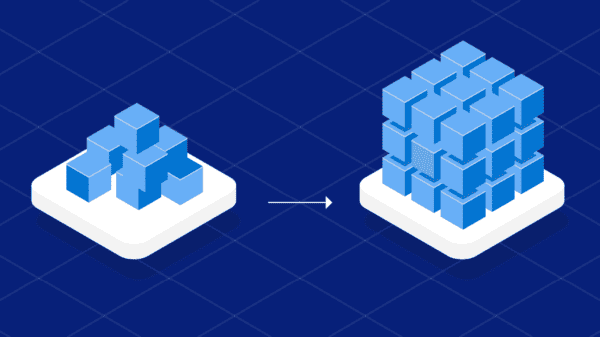Technology has become an integral part of modern society. Individuals, organizations, and government agencies are increasingly depending on IT technologies to improve the efficiency of their operations.
The good news is that technology is getting better and will continue to improve. There will be future innovations that will disrupt industries, business models, and society as a whole. As cloud technologies continue to grow, many new advances will occur, particularly in the Internet of Things (IoT).
While there are many wonderful things to say about technology in general, keep in mind that IoT access puts you at risk of cyberattacks. Most firms cannot afford to suffer a data breach. Hackers shouldn’t have access to sensitive corporate and client information databases or bank accounts. Therefore, it’s best to have a cybersecurity strategy in place.
You must be prepared to deal with a data disaster if it occurs. That’s why businesses need to invest in cloud backup solutions like Azure backup to prevent total data loss in a cyberattack. Nobody is immune to experiencing a data disaster.
As a result, you must be proactive in setting up cyber defenses to prevent data disasters. The following are the steps you should take in the event of a data disaster.

Contain The Breach
When a data disaster occurs, it is critical to safeguard any sensitive corporate data. You want to contain the breach as quickly as possible to prevent further damage. Stop intruders from accessing your data by locking them out of your systems and networks. This process also entails you checking which systems were affected.
Moreover, you must isolate those systems or servers so they don’t affect other parts of your system. Turn off your internet and remote access to disable any active connections. Then, disconnect any affected servers, devices, and computers from your network. Moreover, consider changing account passwords and adding multi-factor authentication (MFA).
Determine The Cause
Understanding how an attack occurred is key if you want to deal with it appropriately. You must also determine what was affected as well as the degree of the damage. Knowing who had access to the compromised systems during the breach is critical. Check to see which networks were connected at the time. After gathering this information, you may devise solutions to address the situation.
Note that no two cyberattacks are ever the same. Therefore, the harm inflicted by every attack will be different. That’s why you need to conduct a thorough assessment to get to the bottom of things. Identify which data was lost or affected during the breach as quickly as possible. This way, you’ll know how cyber criminals could use the lost or affected data against you.
Fix Vulnerabilities
Data disasters result from hackers exploiting a system or network vulnerability. As a result, addressing the vulnerabilities that caused the data breach is essential to disaster response and recovery. You must collaborate closely with your IT team to uncover vulnerabilities and correct system gaps. Additionally, be sure to investigate other possible vulnerabilities that can lead to future attacks.
Conducting a vulnerability assessment is critical because hackers are unlikely to initiate an attack the same way they did in the past. As a result, you must examine all potential vulnerabilities and address them. After doing a comprehensive vulnerability assessment, design solutions to protect your systems. Prioritize short-term or pertinent flaws first while planning how to enhance security in the future.
Notify Affected Parties
All affected parties should be made aware of the breach. Customers, employees, law enforcement, the local community, and relevant agencies are all potential stakeholders. It is far better for them to learn about the breach straight from you rather than via other media channels. Big firms, in particular, should recognize that they should not cover up their tracks since an outsider leak might affect their reputation even more.
Most importantly, your customers must be informed about this as quickly as possible so that they may take protective measures. These measures might involve altering account passwords and changing bank account data and cards.
Hackers frequently target databases containing sensitive information such as credit card numbers and bank accounts. Therefore, you must inform stakeholders as soon as possible. This allows them to notify credit bureaus and banks about fraud alerts.
It’s also critical that you’re completely honest about what happened. Even if the breach was severe, notify all stakeholders anyway. It doesn’t help to keep secrets at all. You may face legal consequences if you remain silent or lie about the incident. The harm it will do to your reputation will also be difficult to regain.
Update Security Protocols
If hackers successfully infiltrate your system, it strongly indicates that your present security measures are ineffective. Thus, you need to update your security measures immediately to prevent another attack.
A comprehensive vulnerability and damage assessment will help update security protocols since it will show you what to prioritize when altering your current security protocols. Once the breach has been contained, you must reassess your data breach response strategy to ensure your defenses are up.
Furthermore, consider educating your staff on security protocol changes. Keep in mind that it will be up to your workers to respond in the event of a breach. When everyone understands their role, it will be easier to deal with a breach. Since they already know what has to be done, they don’t need to prepare.
Security protocols should be reassessed regularly to reflect the current threat landscape. You can’t afford to wait for a data breach before reevaluating your security. Complacency is dangerous since hackers are growing more sophisticated. As a result, security measures should constantly be kept up to date.
Test Your Defenses
Test if the security procedures and systems you implement are effective. You should recreate the attack to evaluate if your present defenses can withstand it. That way, you can be confident that similar attacks will not occur. You should also try running numerous additional scenarios to see if your defense is up to the task.
Conclusion
Cyberattacks are not inevitable. You can take precautions to avoid them and prepare for them if they occur. The rise in cyberattacks should awaken company owners to the need to invest in cybersecurity.
If a data disaster occurs, you should have a disaster recovery strategy that details how you will address the incident. The sooner you stop the breach, the less damage you will incur. It’s also critical to routinely analyze system vulnerabilities. You should be able to detect and resolve them before hackers do.
Keep in mind that the preceding guide is not exhaustive. It provides a good outline of the typical procedures you should follow in response to a breach, but it shouldn’t replace consulting with cybersecurity professionals to protect your systems.
Thanks for reading this article. If you're new here, why don't you subscribe for regular updates via RSS feed or via email. You can also subscribe by following @techsling on Twitter or becoming our fan on Facebook. Thanks for visiting!

























































































































































































